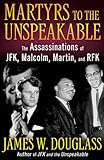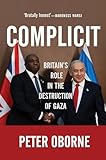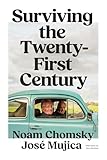African blood flows freely through our veins. We shall defend Angola and Africa!
— Fidel Castro1Fidel Castro, speech at mass rally in Havana, December 1975, reprinted in Cuba and Angola: Fighting for Africa’s Freedom and Our Own (Pathfinder Press, 2013).
History remembers wars and generals, but too often forgets healers. Cuba’s internationalist mission in Africa began not with weapons, but with medicine. In the 1960s and 70s, as newly independent nations struggled to build health systems, Cuba sent doctors, nurses, and medical brigades across the continent. Their work was not charity—it was solidarity.
Healing as Resistance
In 1963, Cuba dispatched its first medical team to Algeria, only months after independence from France. That gesture set the tone for decades of commitment. Cuban doctors treated malaria, tuberculosis, and maternal health crises in regions abandoned by colonial powers.2Cuba’s first medical mission to Algeria, 1963. In Vladia Rubio, “Five Truths About 62 Years of Cuba’s Internationalist Medical Cooperation,” CubaSí, May 30, 2025. They built hospitals, trained local staff, and established public health infrastructures where none existed.
For Cuba, medicine was a weapon against imperial neglect. Fidel Castro declared that “health is not a commodity, but a right of the people.”3Fidel Castro on health as a human right. Speech at the Closing Ceremony of the Health Ministers’ Meeting of the Non-Aligned Countries, Havana, June 26, 1998. By sending doctors abroad, Cuba challenged the logic of empire: that Africa should remain dependent, sick, and vulnerable.
The Humanitarian Frontline
Unlike mercenaries or aid contractors, Cuban medical brigades were volunteers. Many were young graduates who left behind families to serve in remote villages. They lived simply, often without electricity or running water, but their presence transformed communities. Literacy campaigns were paired with health campaigns, making education and medicine inseparable tools of liberation.4Cuban literacy and health campaigns in Africa, 1960s–70s. Helen Yaffe, “Cuban Medical Internationalism: A Paradigm for South–South Cooperation,” International Journal of Cuban Studies, Pluto Journals, 2020.
African leaders recognized this. Amílcar Cabral of Guinea-Bissau praised Cuba’s doctors as “soldiers of humanity,” noting that their work strengthened the very foundations of independence.5In Piero Gleijeses, Conflicting Missions: Havana, Washington, and Africa, 1959–1976 (UNC Press, 2002).
Beyond Cold War Propaganda
Western narratives often dismissed Cuba’s medical missions as propaganda or political maneuvering. Yet the reality was undeniable: thousands of African lives were saved, and entire health systems were built from scratch. By the 1980s, Cuba had sent more doctors abroad than the World Health Organization itself.6Comparative figures: Cuban doctors abroad vs. WHO, 1980s. John M. Kirk, “Cuba’s Medical Internationalism: Development and Rationale,” Bulletin of Latin American Research, Vol. 28(3) (2009).
This was not imperial expansion but internationalist solidarity. The Cuban doctors became living proof that small nations could wield moral power greater than military might.
The Legacy of Healing
The legacy of Cuba’s doctors in Africa is profound. They were healers of resistance, embodying the principle that liberation is not only political but biological—the right to live free from disease and neglect. Their work laid the groundwork for future generations of African physicians and nurses, many trained in Havana’s medical schools.7Latin American School of Medicine (ELAM), founded 1999, hosting ~19,550 students from 110 countries. Rádio Havana Cuba, “Africans in the Latin American School of Medicine,” Nov. 23, 2024.
As Part I of this series shows, Cuba’s internationalist legacy begins with medicine. It is the story of how healing became a revolutionary act, and how the “doctors of liberation” carried the torch of solidarity across continents.
ENDNOTES:










